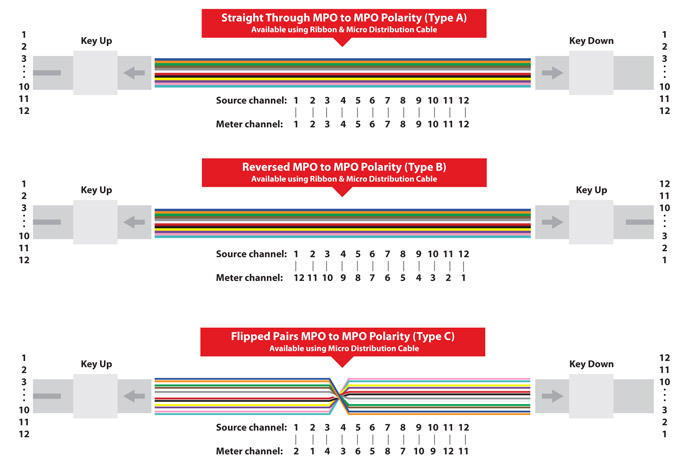MPO (Multi-fiber Push On) connectors are widely used in data center and telecom environments to support high-bandwidth connections between network devices. These connectors offer the advantage of quick installation and removal, while transmitting large amounts of data over multiple fibers at once. An important aspect of using MPO connectors is ensuring the correct polarity of the connectors.
MPO connectors have three different polarity types: Type A, Type B, and Type C. Each type has a specific pin configuration that determines how the light signals are transmitted over the fibers.

Type A polarity has the fibers configured in order of 1, 2, 3…12. The MPO male connector has the fiber pins in the same order as the MPO female connector. Type A polarity is often used in applications where no upgrades or future changes are expected.
Type B polarity has the fibers configured in a mirrored order of 12, 11, 10…1. The MPO male connector has the fiber pins in the reverse order as the MPO female connector. Type B polarity is often used in applications where future upgrades and changes in the fiber configuration may occur.
Type C polarity has the fibers configured in a split order of 1, 12, 2, 11, 3…10. The MPO male connector has the fiber pins in the order of the MPO female connector, except that the fibers are split in an alternating order. Type C polarity is often used in applications where multiple connections are required between two buildings or racks.
It is important to use the correct polarity when connecting MPO connectors to ensure that the fibers are configured correctly and data is transmitted without errors. When the wrong polarity is used, it can lead to problems such as loss of signal strength, high optical power loss, and increased noise.
Over time, various methods have been developed to manage the polarity of MPO connectors, including a “flip method” that reverses the polarity of the MPO connector without changing the fiber configuration.